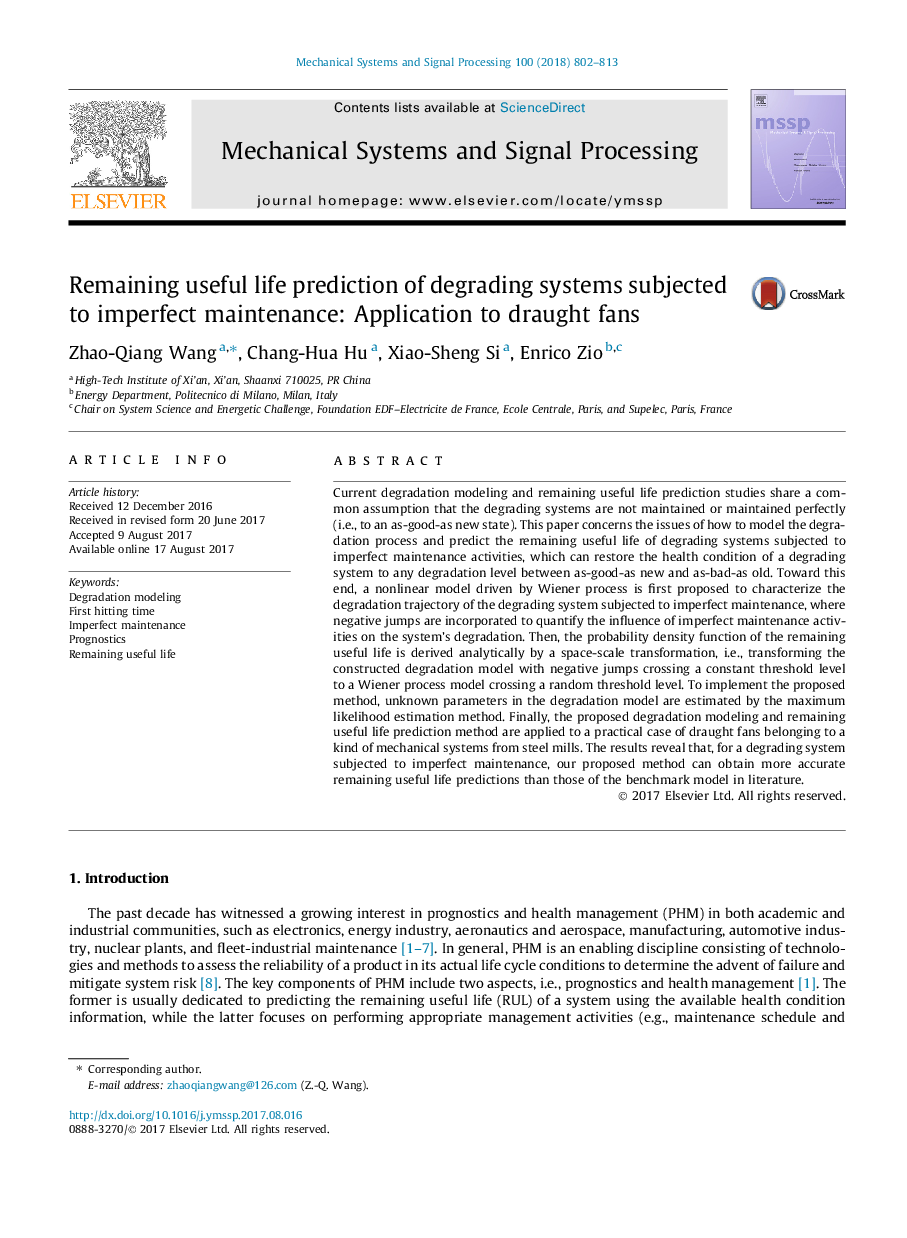| Article ID | Journal | Published Year | Pages | File Type |
|---|---|---|---|---|
| 4976667 | Mechanical Systems and Signal Processing | 2018 | 12 Pages |
Abstract
Current degradation modeling and remaining useful life prediction studies share a common assumption that the degrading systems are not maintained or maintained perfectly (i.e., to an as-good-as new state). This paper concerns the issues of how to model the degradation process and predict the remaining useful life of degrading systems subjected to imperfect maintenance activities, which can restore the health condition of a degrading system to any degradation level between as-good-as new and as-bad-as old. Toward this end, a nonlinear model driven by Wiener process is first proposed to characterize the degradation trajectory of the degrading system subjected to imperfect maintenance, where negative jumps are incorporated to quantify the influence of imperfect maintenance activities on the system's degradation. Then, the probability density function of the remaining useful life is derived analytically by a space-scale transformation, i.e., transforming the constructed degradation model with negative jumps crossing a constant threshold level to a Wiener process model crossing a random threshold level. To implement the proposed method, unknown parameters in the degradation model are estimated by the maximum likelihood estimation method. Finally, the proposed degradation modeling and remaining useful life prediction method are applied to a practical case of draught fans belonging to a kind of mechanical systems from steel mills. The results reveal that, for a degrading system subjected to imperfect maintenance, our proposed method can obtain more accurate remaining useful life predictions than those of the benchmark model in literature.
Keywords
Related Topics
Physical Sciences and Engineering
Computer Science
Signal Processing
Authors
Zhao-Qiang Wang, Chang-Hua Hu, Xiao-Sheng Si, Enrico Zio,
